Hello there, and welcome back to yet another excellent gear review! This time, we will look at the best reactive load on the planet, the Suhr Reactive Load! I know it sounds a bit too assertive, and certain for some of you, but believe me, I don’t often kick off my articles with this tone.
Table of Contents
If you are a regular visitor here, you are probably aware that I have often tended to use tube amps with reactive loads and impulse responses for the last couple of years. Since I really love to experiment with the options on the market, naturally, I have tried many reactive loads, and I’m finally settled down with the Suhr Reactive Load.
As I always do, I will do my best to introduce you to this lovely company, provide nitty-gritty details of the product, as well as original photos, a no-talking style demo video and a detailed Suhr Reactive Load review.
About Suhr
John Suhr’s story starts in New Jersey, about 35 years ago — back when he was just another guitarist trying to dial in that perfect tone in bar bands. You know the feeling: no matter what you tweak, something’s always missing. So, instead of chasing tone, John decided to build it. Literally.
Fast forward to the early ’80s, and John’s working at Rudy’s Music Stop in New York City with Rudy Pensa. That partnership gave birth to the legendary Pensa-Suhr guitars — and if those don’t ring a bell, maybe some of their owners will: Mark Knopfler, Eric Clapton, Peter Frampton, Lou Reed, Steve Stevens… the list goes on. Not bad for a guy who just wanted a better tone.
Check out Suhr product line on Thomann here
But John wasn’t only obsessed with guitars — he had a serious thing for tube amps. In ’91, he teamed up with effects guru Robert Bradshaw and designed the CAE 3+ and CAE 3+SE preamps and the CAE OD100 amp. Those rigs became instant favourites for players chasing that rich, dynamic feel that only a great tube circuit can deliver.
After a few years of amp wizardry, John got a call from Fender — and became a Senior Master Builder at the Fender Custom Shop. There, he crafted one-of-a-kind guitars for the likes of Michael Landau, Scott Henderson, Doug Aldrich, and, yep, Frampton again. He also helped develop new gear behind the scenes, shaping what would become future Fender classics.
By 1997, John decided it was time to take full control of his vision — no compromises, no shortcuts. So he started his own thing: Suhr Guitars. From day one, the goal was simple — build the best instruments possible, with obsessive attention to detail and tone that just feels right.
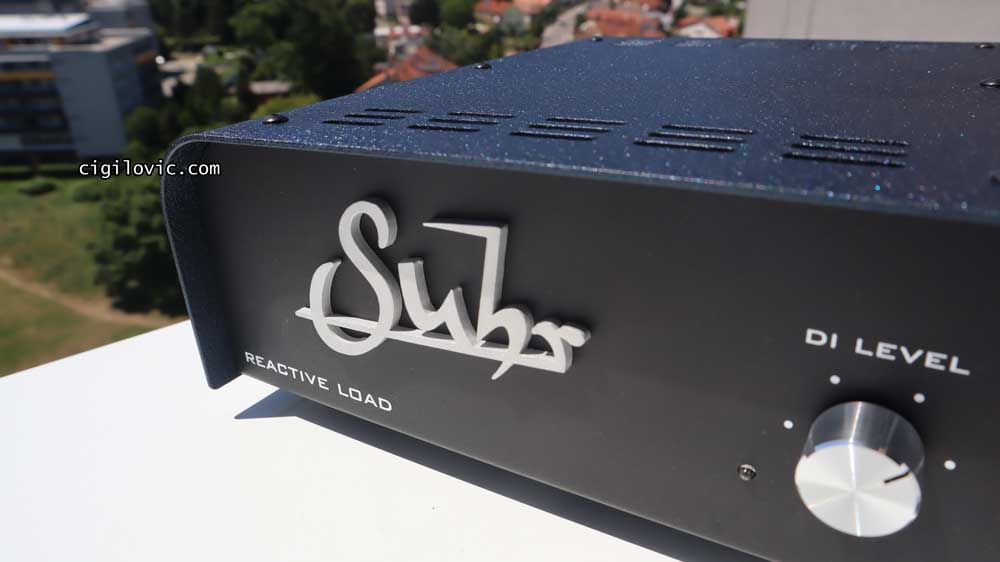
These days, John’s joined by his son Kevin, and the two of them are in full creative mode — experimenting, refining, and coming up with new ideas that keep players inspired.
At Suhr, they don’t just make guitars and amps — they make dream machines for people who live and breathe music. Every curve, every fret, every circuit is built by a small team of passionate craftspeople who love what they do.
Because for Suhr, it’s not just about the final product. It’s about the journey — chasing tone, pushing limits, and never settling. So whether you’re a bedroom player, a touring pro, or just someone who can’t stop thinking about your next guitar, we’re here for the same reason you are: The love of great tone.
Suhr products were always something I could never even get to experience in my lifetime. However, I have recently developed a huge interest and am even considering owning some of their guitars (maybe one day!).
What is a Reactive Load?
A reactive load is a passive analogue model of an actual guitar speaker cabinet. It consists of resistive, inductive and capacitive elements, which are arranged in a way that it generates the exact response of an intended guitar speaker cabinet
By replacing your guitar speaker cabinet, which acts as a load for your tube amplifiers, you can bring down the amp’s output to a line level and make sure it responds just the same as it would to an actual guitar speaker cabinet.
Before reactive loads existed, guitar players only had access to the resistive loads. I wouldn’t even know whether this terminology was mentioned, because there was no other option. But in the last decade or so, guitar gear manufacturers came up with this idea to design reactive loads. I think it’s one of the greatest inventions for guitar players so far!
With reactive loads, you will not lose any dynamics and feel of your amp. And this will translate into a very realistic recorded guitar tone when combined with impulse responses or analogue cabinet emulators.
Why Try Yet Another Reactive Load?
While saving up for these incredible instruments, I also wanted to try their other product offerings, such as the Suhr Reactive Load and the Suhr A.C.E. (Analogue Cabinet Emulator).
As I have mentioned, I often favour my Marshall SV20H Mini Plexi with reactive loads and impulse responses over anything I have ever tried.
So far, I have owned and tried RedSeven Amp Central, Two Notes Captor, st. Rock REACT IR II, and Two Notes Captor X SE.

Although these listed products offered great value, I wanted to simplify and isolate the reactive load component in my idealised bedroom guitar player rig. To do so, I went through the options on the market for some time, and ended up with the idea that I should just get the best reactive load without any additional features such as impulse response loader section, effects, attenuator, or anything extra.
This way, I could also experiment with different IR loading units and eventually decide to settle on one. With this approach, I could have the most modular tube amp, reactive load, and impulse response loader rig ever!
Suhr Reactive Load
The Suhr Reactive Load delivers a simple solution to capture all of the warmth and dynamics of your sound, without the hassle of miking a speaker cabinet during a live or recorded performance.
It takes the place of your guitar speaker cabinet, provides an 8Ω load for your tube amplifier (maximum 100 watts), and produces a balanced or an unbalanced signal that you can directly record with impulse response loaders or plugins that host IRs in your DAWs.
Real guitar speakers don’t have a fixed resistance across the frequency spectrum; instead, they are highly reactive to the power amp section of your tube amplifiers.
The impedance curve of the Reactive Load has been rigorously tuned to react like a speaker, so that your amp will never know the difference whether it’s connected to a real guitar speaker cabinet or the Suhr Reactive Load! Ads - Check out these ads to support this web page
With this highly precise reactive load circuit, when you play your tube amps with impulse responses or analogue cabinet emulators, you are guaranteed to retain the warmth and dynamics of your amplifiers, which is never the case with traditional resistive loads.
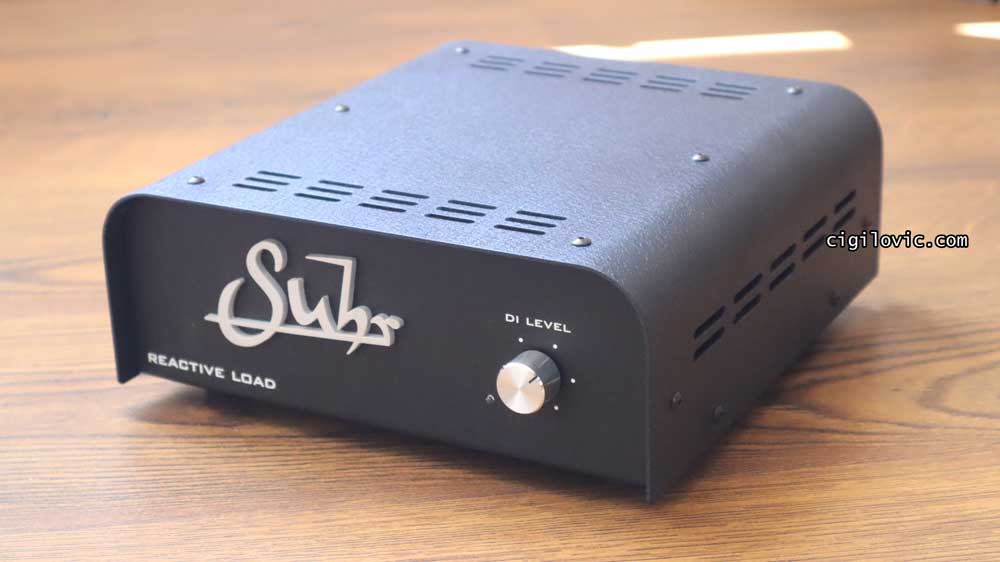
The Suhr Reactive Load is the bare-bones reactive load that features no digital signal processing or analogue speaker emulation circuit inside. Therefore, you need to have a hardware or software impulse response loader or an analogue cabinet emulator (such as Suhr A.C.E.) to benefit from its full capabilities.
Suhr RL is a very simple to use device with minimal, but more than enough controls, and an input & output section. It features a balanced or unbalanced output.
The Input is optimised for an 8-ohm output of your amplifier, and also comes with a Thru output that can be connected to a real speaker. When a real speaker cabinet is connected, the internal load of the Suhr RL is bypassed, and your amp will take the speaker cabinet as the load.
On the front panel, there’s only one control, which is the DI Level. This controls the output of the balanced and unbalanced DI/Line Out (on the rear panel). Based on the explanation by Suhr, the maximum amount of DI signal voltage is approximately 17% of the amp’s output voltage.
Note that, as with any reactive load, you should be careful not to push your tube amplifiers’ output levels a lot higher than you would normally with a speaker connected to your tube amps. Since there’s no speaker in this use case, we don’t realise how much power we are pushing through the tube amps, and it may cause your tubes to wear out a lot faster.
As mentioned, there’s only a DI Level control on the front panel with a tiny blue LED. But you may also have realised that there’s no power supply required to power up the Suhr Reactive Load!
It’s because the LED is powered by your amplifier’s output, which is really cool. The strength of the LED depends on your amplifier’s output power. So the less output power coming out of your amp means the LED to appear dim.
There’s also a built-in fan inside the Reactive Load. The fan is placed there to cool down the unit, as the reactive loads dissipate the power as heat. So sometimes it’s required to cool down the unit. Again, this fan is powered by the output of your tube amplifier, and there’s no power supply required!
The fan is automatically turned on and off based on the amount of power delivered to the reactive load. Based on the manual, the fan will begin to operate when the input power is greater than 25 watts.
The back panel may look more complicated than the extremely simple and lean front panel! 🙂 However, it’s still a very straightforward design.
There’s an input, which is also labelled as “From Amp“, and you should connect your tube amp’s 8 ohm output here using a speaker cable (not an instrument cable!).
Next to that, we have another connection, “Thru (To Speaker)”. This is for connecting your tube amplifier’s output “through” the reactive load to a guitar speaker cabinet. As mentioned, using this output will bypass the internal load of the Suhr RL.
Last but not least, we have two outputs labelled as balanced and unbalanced. These should be used for connecting the Suhr Reactive Load to a recording device, effects unit, or a power amplifier.
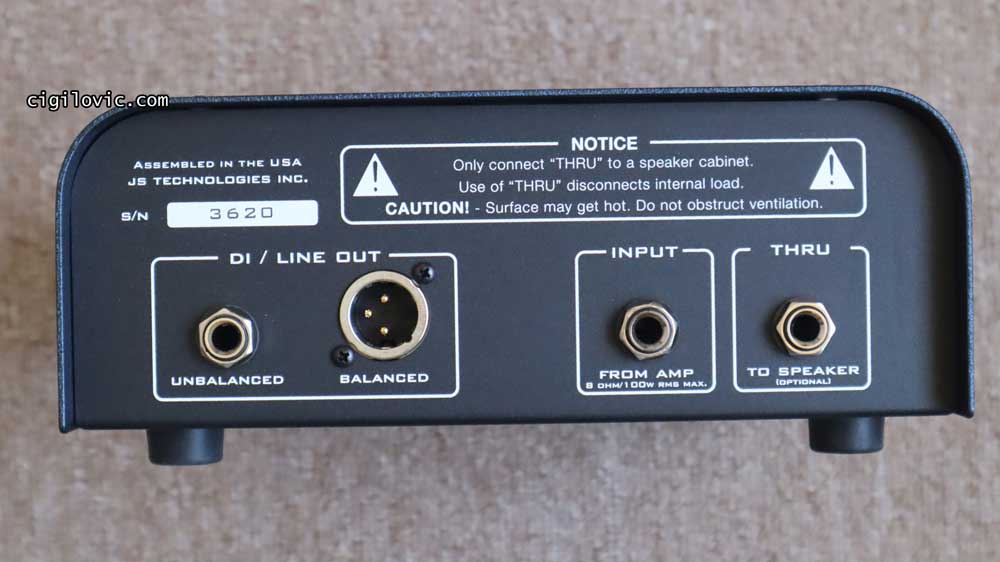
That’s pretty much of it! Very simple, lean, extremely minimalist product design that does one thing in the best way possible! Before we have a listen to the demo I prepared for you, let’s first have a quick look at the tech specs for your reference.
Suhr Reactive Load Tech Specs
| Suhr Reactive Load | Tech Specs |
|---|---|
| SKU | 07-RCL-0001 |
| Speaker Input Impedance | 8 Ohm |
| DI / Line Out Level | +4 dBu at 7 watts input, maximum level setting |
| Balanced Line Output Impedance | Less than 6KΩ |
| Unbalanced Line Output Impedance | Less than 6KΩ |
| Maximum recommended input power | 150 Watts RMS |
| Internal Fan | Yes, activates when input power is greater than 25W |
| ROHS Compliant | Yes |
| Dimensions | 22.35 cm (W) × 22.61 cm (D) × 9.14 cm (H) |
| Weight | 3kg |
| Made In | USA |
As explained and can be seen in the tech specs table, it’s one of the most minimalist reactive loads ever on the market. Now, hopefully, we are going to have a listen to the sound demo, and then we will jump into the Suhr Reactive Load review section below.
Suhr Reactive Load Review & Demo (no talking)
For the demo video, I used my Ibanez AR300, Marshall Studio Vintage SV20H, Voodoo Lab Sparkle Drive, CAE MC404 Wah, MXR Carbon Copy Deluxe, Ibanez Pentatone EQ, Ibanez Pentatone Gate (PTGATE), Two Notes Opus, as well as my RME Babyface PRO FS audio interface and Genelec 8020DPM monitors. I only used Wave Alchemy Magic7 as my reverb plugin.
I actually played these samples live while recording the video, but I couldn’t record myself playing. Hopefully, it’s a useful video for you to understand how Suhr Reactive Load sounds with a Plexi-type amp.
Suhr Reactive Load Review
Suhr Reactive Load is actually not a very recent product. As far as I know, it’s at least a decade-old product. But it is still going very strong among the other reactive loads on the market.
The company also released the IR version of the same product, which featured a built-in IR loader with some really nice Suhr impulse responses back in 2019. But the OG Reactive Load was released back in 2015 or so. Ads - Check out these ads to support this web page
Suhr Reactive Load comes in a very simple cardboard packaging. There’s not much of a sign that it’s a Suhr-branded product apart from the labels on the side.
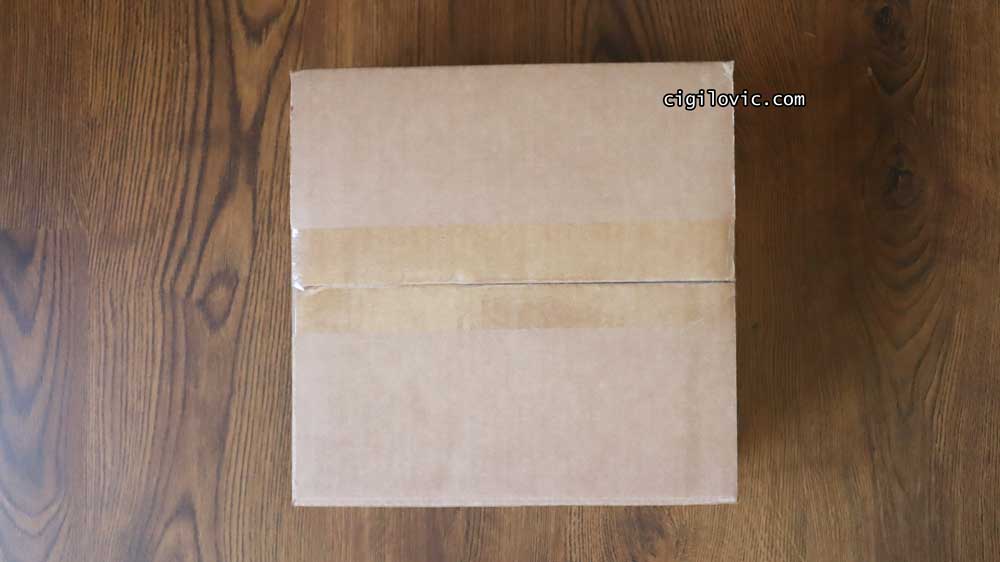
But sometimes you get the feeling of a well-thought-out product just by receiving your parcel and starting to open up the package. Even the cardboard material is very sturdy, and it’s a good first impression for any product.
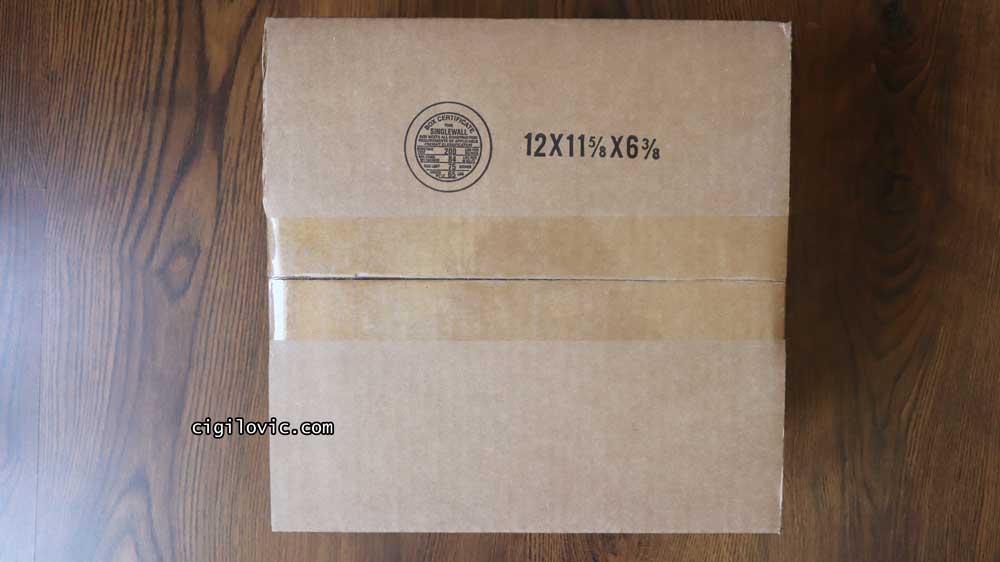
As mentioned, there are no printed branding signs or labels on the package, but just the labels as shown in the images below. Mine has the serial number #3620!
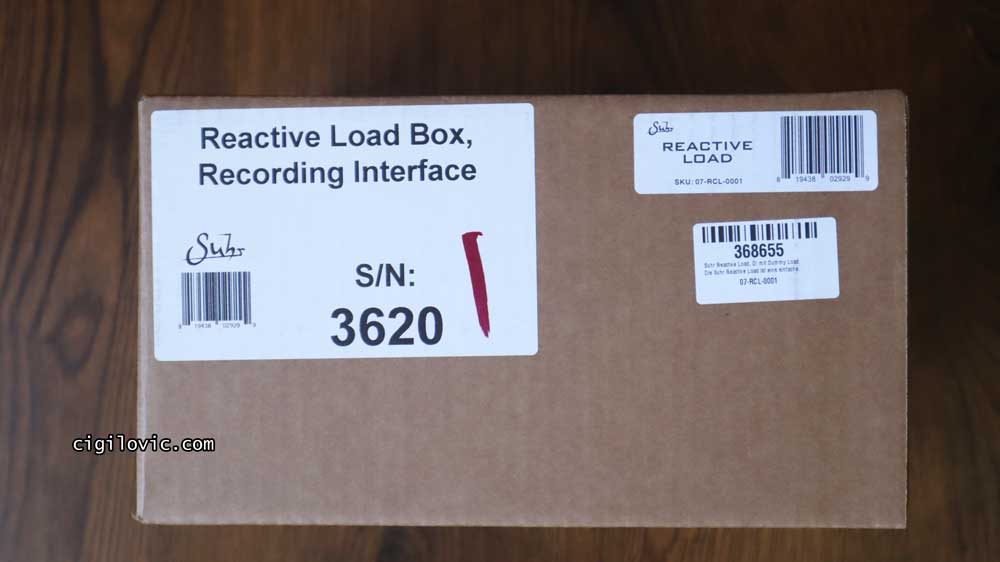
And for future references, here’s the SKU and the barcode information below.
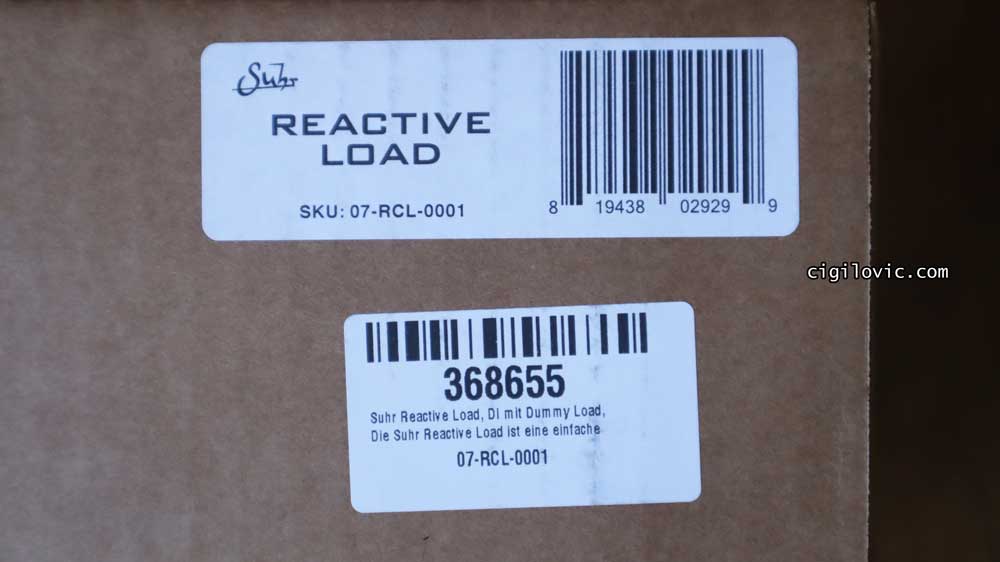
The hard pads are used to keep the reactive load afloat, and the reactive load is really well-protected.
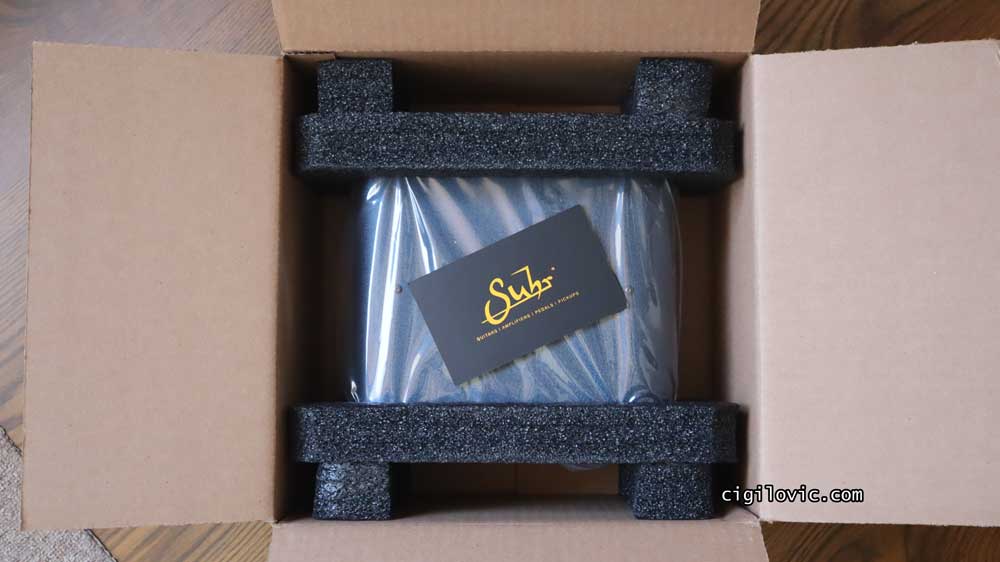
As you can see from the images, the box content is also very simplified and minimalistic!

You only have the unit and the Suhr warranty information card.
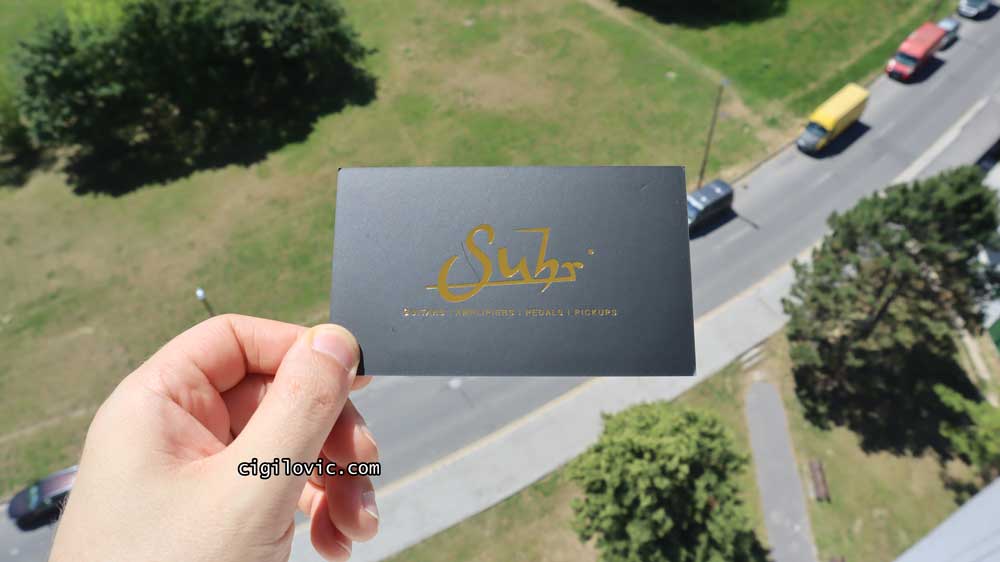
I registered my product at Suhr.com. I must say the registration process is a bit dated, as you don’t have a profile where you can add your products. But rather, you just register every product with the same dated form.
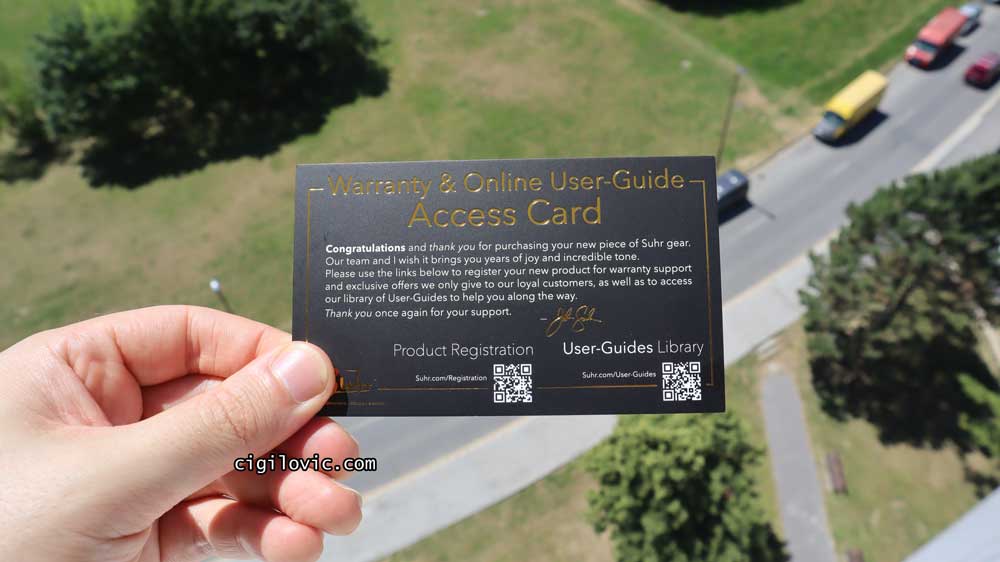
Suhr Reactive Load is a lot heavier, sturdier and bulkier than I expected to be honest! It weighs around 3kg and is surrounded by a blue-ish coloured bent metal chassis.
To me, Suhr RL can easily survive a nuclear war. It looks and feels so durable. On the top panel, we have a pair of vents section that helps the unit cool down.
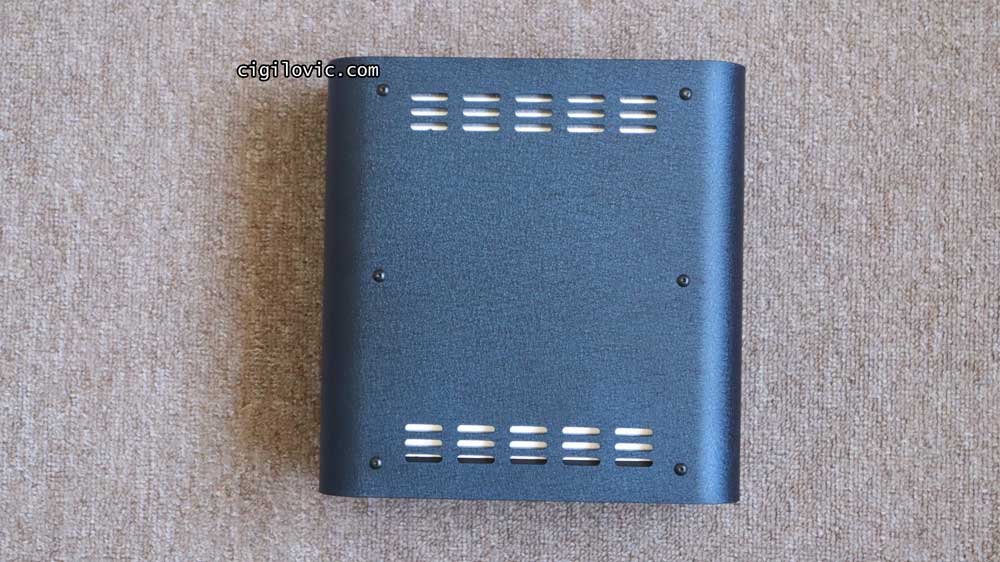
On the bottom chassis, you have a black-coloured chassis, which is different from the top and sides. You also have screw-mounted, pretty durable pads to lift the unit off the surfaces, which is a nice touch!
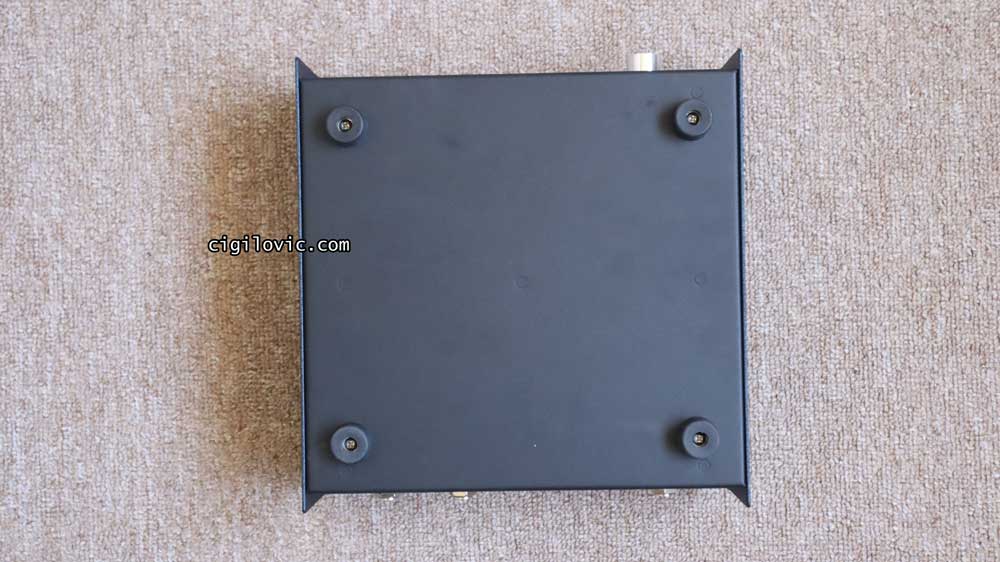
As explained, the front panel is fairly simple. Just a nice Suhr logo, and the DI Level with a blue LED.

On the sides, you also have a pair of vents to help with cooling down the unit. Regarding the heating, I have had the chance to test the Suhr RL with my Marshall SV20H Mini Plexi amp, which is a 20-watt amp, as well as my Marshall JVM410HJS Joe Satriani Signature amp, which is a 100-watt amp.
I must say my Mini Plexi couldn’t even heat the load at all. It was just warmed up, and I could easily touch the surface of the unit after having played for hours nonstop.

However, my JVM really cooked it! Even though I kept the master volume at around 2-3 (out of 10, Marshall-knob indicators), it was extremely hot, so that I couldn’t hold my hand on the unit for longer durations!
So, although it’s advised that you can go for a 100-watt power at max, I wouldn’t like to test a 100-watt amp at full volume for hours. I believe it’s an unnecessary risk to take.
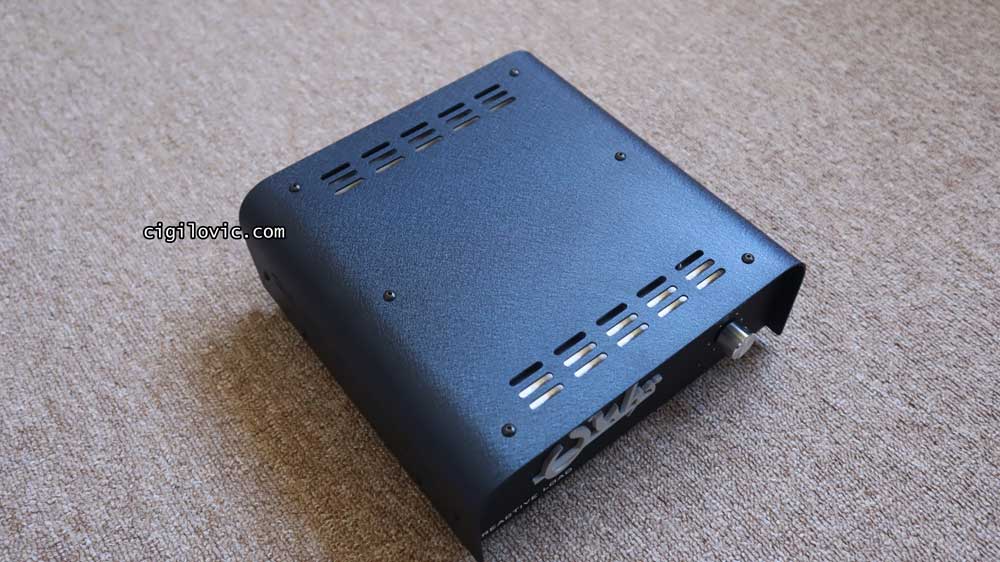
To be honest, I don’t think this is a problem with the Suhr Reactive Load. All the loads I have used and tested so far got really hot with a 100-watt amp. My st. Rock REACT IR II even started smelling weird. When I asked the manufacturer, they told me that there are many chemicals used for making those components, so since they are brand-new, they may release some smell.
Verdict
As I mentioned in the beginning, I have tried various reactive loads on the market, and now I can comfortably share with you that I’m settled with the Suhr Reactive Load. I think it’s the best reactive load on the market!
It’s affordable, extremely durable, built like a tank, and made with high-quality components by one of the greatest guitar & amp companies on the planet!
The simplicity, humbleness, and the minimalistic approach got me really thinking differently. At the end of the day, reactive loads sound and feel pretty similar to each other. During my tests with high-end reactive loads, I have found that the Suhr Reactive Load sounds and feels the best to my ears with Marshall-style amps.

I would say RedSeven Amp Central, as well as the st. Rock reactive load has a very similar sound and feel to Suhr RL. However, since I wanted to isolate the reactive load component and keep experimenting with the IR component separately, I ended up with Suhr RL.
And I regret not having bought this first, and just settled down with it! It cost me a lot, but it’s part of the learning and gaining experience with guitar gear.
In my current rig, I use a variety of guitars with my simple pedalboard that features multiple overdrives, a noise gate, an EQ, a wah and a volume pedal. This signal chain is then fed into my Marshall SV20H and Suhr Reactive Load.
Until this point, it’s all analogue, traditional and extremely simple. Then I use my Two Notes Opus as my impulse response host (which I will be featuring here soon!).
This setup gives me everything I need, as I can have an infinite number of possibilities with different impulse responses! By far, this setup has become my favourite rig I have ever experimented with. I always look forward to turning my amp on and starting to jam on my own at the end of a busy working day! Very inspiring!
The reason I wanted to have a “modular” system is that, in case there’s a crazy improvement or invention released for impulse response technology, I can always give it a go. But I don’t think reactive loads can be further improved. The technology is there; you can just expect different-sounding and feeling reactive loads that may feature different impedance curves. That’s all!
Check out this wonderful modular rig!
At least, this is my understanding, and I’m talking from a personal experience standpoint. I tried all these reactive loads, and I like most of them. But Suhr stood out of the crowd with its simplicity and minimalistic approach.
One more cool thing about the Suhr company is how much they care about their customers. Right after I got my Suhr RL, I already started thinking whether I should have gone for the Suhr Reactive Load IR version, and I just ended up with a single unit.
That gave me another reason to buy more and more gear! 🙂 But before I did that, I went to Suhr.com and contacted the customer support, as I was really curious about the Suhr impulse responses that they implemented in the IR version.
I simply asked them whether I could buy these, and they sent these IRs to me immediately! Now I can load these Suhr impulse responses into my Two Notes Opus and create Suhr RL IR presets, so I can get a taste without spending additional money on a new reactive load! A truly legendary company and people!
Where to Buy Suhr Reactive Load?
As always, I got mine from Thomann! Even though I found some slightly cheaper listings on various online music stores in the EU (5-10EUR less), I went for Thomann as I believe it’s the best music store on the planet!
The cool thing about the Suhr Reactive Load is that it’s been on the market for the last decade or so, and it’s widely available, virtually in every serious music store!
You can also go for the used ones, especially if you are based in the US. Since it’s a US brand, you can find a lot better deals in the used market in the USA. However, in the EU, used options are not always the best deals.
If you enjoy my reviews here, you can buy your Suhr Reactive Load via these links and support my blog without any extra cost on your end! 🙂
Check out Suhr Reactive Load on Thomann here
There are also used ones as well as brand-new ones listed on Reverb.
Check out my Suhr Reactive Load on Reverb here
Thanks for visiting my blog and supporting me so far! I will hopefully see you in the next review here!
Osman Cenan Çiğil – cigilovic.com
Post your comments and feedback here
By submitting a comment, you accept that you will be automatically included in the newsletter. You can always opt out in case you are not interested in the content updates.Check out the best used gear website!




